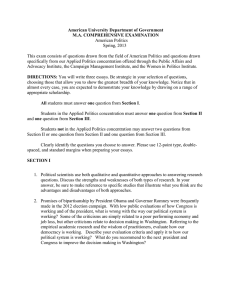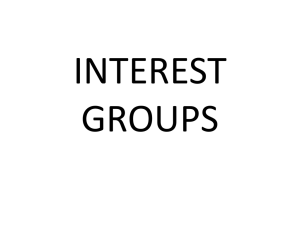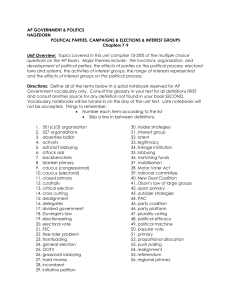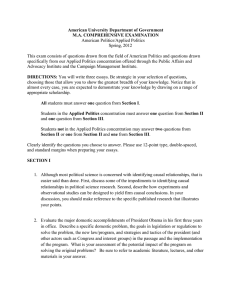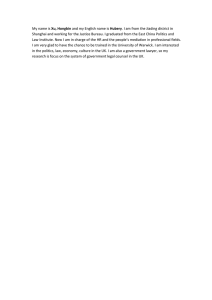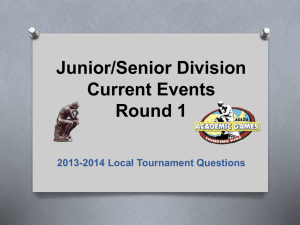American Politics Spring, 2014
advertisement
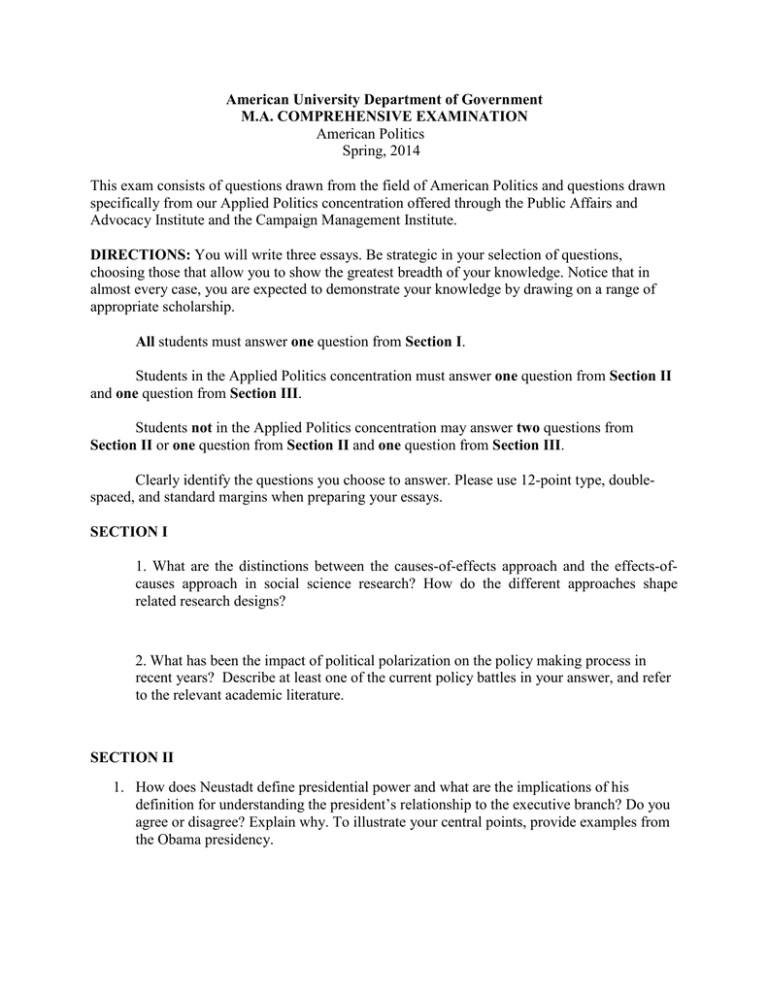
American University Department of Government M.A. COMPREHENSIVE EXAMINATION American Politics Spring, 2014 This exam consists of questions drawn from the field of American Politics and questions drawn specifically from our Applied Politics concentration offered through the Public Affairs and Advocacy Institute and the Campaign Management Institute. DIRECTIONS: You will write three essays. Be strategic in your selection of questions, choosing those that allow you to show the greatest breadth of your knowledge. Notice that in almost every case, you are expected to demonstrate your knowledge by drawing on a range of appropriate scholarship. All students must answer one question from Section I. Students in the Applied Politics concentration must answer one question from Section II and one question from Section III. Students not in the Applied Politics concentration may answer two questions from Section II or one question from Section II and one question from Section III. Clearly identify the questions you choose to answer. Please use 12-point type, doublespaced, and standard margins when preparing your essays. SECTION I 1. What are the distinctions between the causes-of-effects approach and the effects-ofcauses approach in social science research? How do the different approaches shape related research designs? 2. What has been the impact of political polarization on the policy making process in recent years? Describe at least one of the current policy battles in your answer, and refer to the relevant academic literature. SECTION II 1. How does Neustadt define presidential power and what are the implications of his definition for understanding the president’s relationship to the executive branch? Do you agree or disagree? Explain why. To illustrate your central points, provide examples from the Obama presidency. 2. Some scholars of voting behavior claim that campaign events don’t matter for the outcome of elections because other short and long term factors determine voting behavior. Others say that in some elections, campaign events can make (and have made) a difference in determining the outcome. What are the two sides of this argument and what evidence do they offer for their theories? 3. What specific factors, in terms of leadership, policy, politics and process, led to the government shutdown in October, yet averted a shutdown in January? What near-term changes and /or consequences could help us avoid the ongoing threats of a government shutdown. SECTION III 1. We are approximately six months away from the 2014 midterm elections. If you were hired to manage a race for a competitive Senate candidate, what strategy and tactics would you encourage him or her to focus on now? Would your advice differ for Democratic and Republican candidates? 2. Define all dimensions of lobbying and advocacy in U.S. politics using examples from lectures and the academic literature. President Obama has attacked “the way Washington works” and promised to change the nature of lobbying. What are President Obama’s major criticisms of lobbying? Has he succeeded in changing the way lobbying works in Washington? Why or why not? Refer to the relevant academic literature, lectures, and primary sources in your answer.

